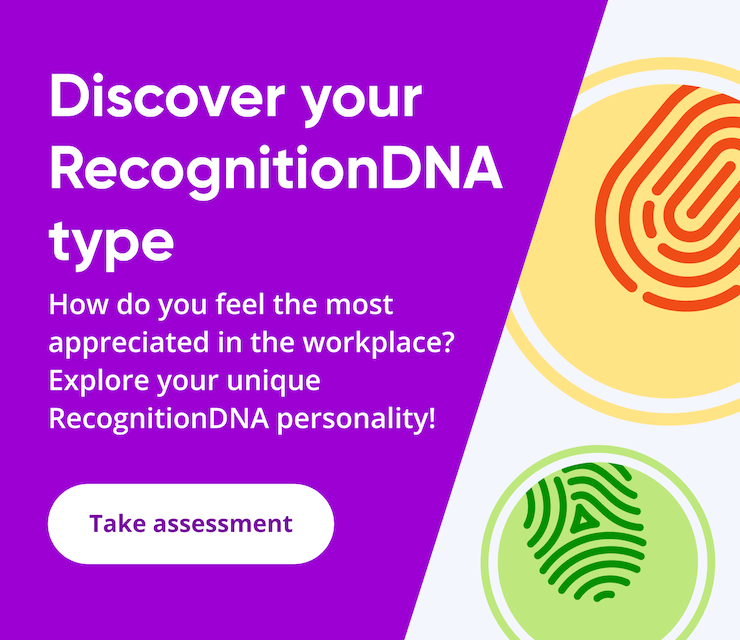As we see cloud culture continue to grow in prevalence, keeping employees engaged, whether remote or in-office, has proven to be quite challenging for many organizations. It’s no secret that employee engagement is important and critical to overall company success, which is why many leaders are asking themselves how they can improve levels of employee engagement within their teams. The answer to this question is creating an effective employee engagement action plan.
An employee engagement action plan embraces the era of employee care we’re currently in because it emphasizes the employee experience and the business ramifications of that experience.
According to Gallup, the U.S. recently saw its first annual dip in engaged employees in over a decade– dropping 2 points from 36% in 2020 to 34% in 2021. This decline has continued into 2022 where only 32% of employees are engaged.
While this negative trend can be alarming, it can also be altered. Employee engagement action plans help move the needle in the other direction by increasing employee engagement through strategic and effective engagement initiatives. But what exactly is an employee engagement action plan and how would one even begin implementing a program at their organization? We’re here to walk you through everything you need to know about engagement action plans and the steps to take to create them!
What is an employee engagement action plan?
An employee engagement action plan is a strategic process aimed to increase employee engagement levels through prioritized activities, focused efforts, and thoughtful company initiatives. The most important elements of an employee engagement action plan are right in the name itself. Effective employee engagement action plans must be actionable and include a detailed plan aimed at accomplishing those actions. Employee engagement planning should include input from leadership across the organization and should align with the overall company vision, culture, and goals. A well-structured employee engagement action plan enables you to:
- Discuss key drivers of employee engagement to identify areas of improvement along with well-performing areas where you have an opportunity to build off that success.
- Align on what changes will have the highest and most immediate impact on your employee engagement levels.
- Create an accountability matrix where stakeholders are clearly identified and responsible for bringing your employee engagement initiatives to life.
How to set up an employee engagement action plan
Setting up an employee engagement action plan can be quite overwhelming, especially when it comes to figuring out where to start. We’re here to take the guesswork out of the equation and guide you through 11 pragmatic steps that will get you action planning with the best of them in no time!
1 Define what employee engagement means to your organization.
Before you even begin thinking about your employee engagement action plan, you must start with defining what exactly employee engagement means to your organization. In general, employee engagement is the extent to which an employee feels personally invested in their work and aligned with the overall company culture & vision.
However, employee engagement manifests itself in many different ways. In this step, you need to identify what aspects of employee engagement are most relevant and critical to your company’s success.
➣ Does employee engagement mean having strong & transparent conversations between leadership and employees?
➣ Does it mean having a focus on employee well-being and growth opportunities?
➣ Does it mean attracting and retaining the top talent in your industry?
Align with key leaders across the organization to identify what employee engagement looks like at your company & what’s most important to your go-forward plan.
2 Identify the key drivers of engagement in your organization.
Now that you have internal alignment as to what exactly employee engagement means within your organization, it’s time to explore what the key engagement drivers are at your organization. Some common drivers that affect employee engagement include recognition, communication, development opportunities, and the work environment or culture. In their 2022 Employee Engagement Guide, Gallup identified five key elements driving high levels of employee engagement.
➤ Measure: Companies must be able to effectively measure important elements of employee engagement that are vital to overall company success. A standard way to measure this is through comprehensive and frequent employee engagement surveys.
➤ Have Growth-Oriented Conversations: Use those measurement findings to fuel the conversations that your management is having with their team members. These conversations should have an emphasis on continued and supported professional growth.
➤ Clear, Ongoing Communication: If leadership is not communicating clearly, transparently, and often with their employees, engagement levels will inevitably drop. Maintaining open communication allows your employees to feel heard and recognized.
➤ Focus on Well-Being: Through the rise of culture as a service, we’ve seen many companies begin to prioritize the overall well-being of their employees and place their satisfaction levels at the forefront of business decisions. Companies that emphasize employee well-being will have higher employee engagement levels.
➤ Have Strength-Based Conversations: Leadership should be armed with the tools and training needed to have meaningful, strength-based conversations. Every employee has unique talents and strengths. It’s up to the leadership team to grow these talents and keep engagement strong.
3 Develop specific goals and objectives.
The third step in creating an effective employee engagement action plan is developing specific goals and objectives for your initiative. Without identifying your action plan’s goals, you won’t be able to measure its success. Be sure you’re selecting goals that align with your overall company objectives and that the goals identified can be effectively measured before and after your employee engagement action plan implementation. Some examples of common goals when implementing an employee engagement action plan include:
- Increase productivity levels (output, sales, etc.).
- Improve employee satisfaction.
- Increase effective communication between leadership & management and therefore, management and employees.
- Decrease employee turnover rates.
- Increase in employee retention.
- Increase employee advocacy.
- Lower absenteeism.
Pro-Tip: Make sure your goals follow the SMART methodology! (Specific, Measurable, Achievable, Relevant, Time-Bound).
4 Identify the strategies and tactics you’ll use.
You’re on a roll! Now that you’ve identified what exactly you want to accomplish, it’s time to think about how you will accomplish those goals. There are quite a few effective employee engagement strategies or tactics you could use to reach your action plan objectives. Some potential strategies include:
- Offering opportunities for career development such as training courses, mentoring programs, or no-cost industry news subscriptions.
- Launching employee engagement feedback surveys at a set cadence that are brief yet address pertinent topics.
- Create an employee recognition program, whether structured, unstructured or a combination of both.
- Consider offering employee care packages to kick off your program’s launch.
- Encourage a two-way channel of communication between employees and leadership. Examples include a monthly leadership newsletter, a quarterly town hall, and open office hours for ongoing employee feedback & suggestions.
5 Conduct an employee engagement survey.
Let’s recap.
You’ve defined employee engagement as it relates to your organization. You’ve identified the key drivers influencing employee engagement. And you’ve developed your engagement action plan goals along with the strategies you’ll utilize to achieve them.
Great job! Up next, it’s time to put all your work thus far to the test and gauge where your employees sit currently on the engagement spectrum.
The best way to level-set and collect feedback on how employees feel about their work, their leadership team, and the overall company is to conduct an employee engagement survey. There are some amazing third party companies you could utilize to assist with this step, but it’s totally feasible to tackle on your own as well! When creating your employee survey, try to keep it brief so employees are more likely to take the time to complete it.
You want some feedback from your employees on areas in which your organization can improve their engagement efforts. But it’s also important to ask your employees to identify areas in which you’re doing well so you can potentially build on that success and scale up those efforts accordingly.
6 Analyze the survey results.
YAY– you had a super high response rate to your employee engagement survey and now have a ton of valuable feedback!
What now? Now, it’s time to sift through your employee engagement survey results and identify any notable trends and recurring themes in the responses.
If you use survey software, such as Microsoft Forms, the survey data will be shown in chart format so that you can identify popular answers to your survey questions.
What areas did your employees voice concern about? As you review the survey results, keep in mind the work you completed during Steps #1-4.
Do the survey results align with this engagement work? Were some of the results surprising? Take note of this as you move on to Step 7.
7 Develop an action plan.
Based on the analysis completed in Step 6, it’s time to develop an action plan. This is where you outline the specific steps you will take to improve employee engagement in areas flagged.
Listed below are some potential questions to pose when developing your action plan:
- Were there disappointing survey results that could potentially be solved with simple, easy-to-implement changes resulting in immediate quick wins?
- What were the lowest scoring engagement areas and should you start by tackling those first?
- Can some survey items be grouped together and solved under one umbrella initiative?
- What area surveyed has the greatest impact on engagement levels?
- Is there a long-term engagement initiative that may take some heavy lifting to start, but would have a significant impact on increasing employee engagement?
- Am I creating my action plan with the input of all key leadership stakeholders within my organization?
8 Implement the action plan.
Now that you have a strategic action plan in place, the time has come to finally implement that action plan! A key component of implementing your action plan is effectively communicating that plan to your employees so that they’re well aware of what your engagement efforts are and the strategies you’ll be utilizing to support them.
Your action plan communication should include:
- Specific actions your organization has committed to implementing.
- When your specific strategies or initiatives will launch.
- Identify the key stakeholders responsible for your initiatives.
- Milestone check-in dates as you roll out your action plan.
- Target end date for this first iteration of the action plan.
- How the success of this program will be measured.
9 Assign responsibility for each task.
Piggybacking off of Step 8, you must be sure that each task within your action plan has an assigned stakeholder who is responsible for it. Implementing an employee engagement action plan is no small feat. It truly does take a village to launch and maintain strong engagement action plans.
To make sure everything is completed promptly, it’s critical to assign responsibility for every step along the way. When assigning these tasks, keep in mind what the task is and who would be the best fit to tackle it.
You want to be sure you’re selecting employees who are not only excited about the project but have the time and knowledge needed to successfully complete their assigned task.
10 Evaluate the results.
Take a second to pat yourself on the back– you’ve implemented your employee engagement action plan! Don’t celebrate too much though because the work does not stop there. Now that your action plan is, well, in action, it’s time to start evaluating the impact your efforts are making. Are you seeing improvement in the employee engagement objectives you identified in Step 3? What has been working well and what may still need improvement tweaks?
Keep in mind, that you don’t want to begin evaluating results right away as you’ll need to allow time to aggregate comparison data. As part of Step 8, you’ve earmarked progress check-in milestone targets for this evaluation.
A good rule of thumb is to wait at least 1 month before you even begin looking at any effects on metrics. If your action plan is more of a long-term initiative, then quarterly elevations would be the way to go!
11 Evaluate your progress and adjust your plan as needed.
Employee engagement efforts are not a one-and-done scenario. There must be continual follow up to ensure your action plans are evolving as needed. Based on the results of your evaluation, this is the time to make adjustments or additions to your employee engagement action plan.
You should continually monitor your employee engagement efforts through employee engagement surveys and make pivots to your plans accordingly. Make sure you’re also regularly checking in with the key stakeholders responsible for your action plan to see how their specific action areas are performing.
As you adjust your plans, keep the entire organization in the loop with updates throughout the year via company newsletters or town halls.
People Also Ask These Questions About How To Set Up An Employee Engagement Plan
Q: What are the benefits of creating an employee engagement action plan?
- A: There are many benefits to implementing an employee engagement plan and having strong employee engagement. Some benefits to successfully launching an employee engagement action plan include higher productivity & profits, better team morale, decline in turnover rates, increased employee satisfaction, better work-life balance, and a positive workplace environment.
Q: What are some employee engagement action plan examples?
- A: Some examples of employee engagement action plans include launching a formal employee recognition program, offering growth or learning opportunities, and increasing communication transparency between leadership and employees.
Q: What makes a good employee engagement action plan?
- A: A good employee engagement action plan should align with your overall company vision and objectives. It should be a strategic plan that includes timelines, assigns responsible stakeholders, and communicates clearly to your employees what initiatives you will be bringing to fruition.
Q: How do I know if my employee engagement action plan was successful?
- A: You’ll know if your employee engagement action plan was successful through feedback collected from employee engagement pulse surveys. Be sure you have measurable data points collected prior, during, and after implementing your action plan so you have comparison figures to conduct your effectiveness analysis.










